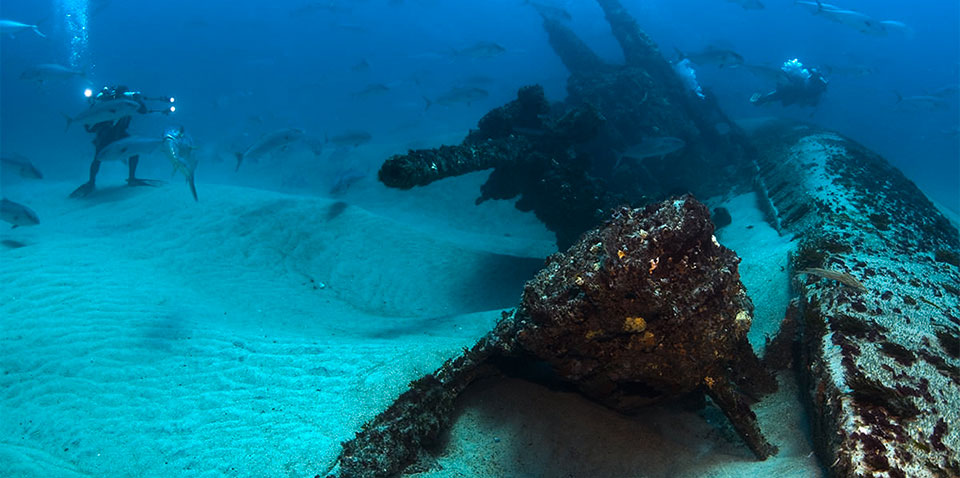Climate Change and Ocean Acidification
Monitor

Why is it a concern?
On global and regional scales, the ocean is changing due to increasing atmospheric carbon dioxide and associated changes in a number of physical and chemical processes. Physical changes include sea level rise, coastal erosion and flooding, as well as changes in precipitation and runoff, storm frequency and intensity, ocean-atmosphere circulation, and ocean water properties such as temperature. Increased levels of CO2 in the atmosphere have further increased the dissolved CO2 concentration in seawater, reducing the pH and making the ocean more acidic. These changes in climate and in ocean chemistry, in turn, can impact sanctuary resources including biological and archaeological resources.
Climate change may be a threat to the wreck of the USS Monitor. An increase in temperature or change in seawater pH in the case of ocean acidification has the potential to accelerate or advance the deterioration of the wreck itself.
Overview of Research
No regular climate change, ocean acidification, or water quality monitoring research has taken place within the sanctuary in order to identify any changes that may be occurring (pH, temp, etc.). In addition, the corrosion potential of the wreck itself has not been regularly monitored which is necessary to establish a baseline and detect changes.
Science Needs and Questions
The best available science is used by Sanctuary scientists and managers working to address priority resource conservation and management issues. As priorities change and new issues emerge, each Sanctuary develops new science needs and questions and works with partners to address them.
- What are the conditions of water quality found in the sanctuary? How do these parameters change/ differ seasonally, temporally, with depth?
- What is the current rate of deterioration of the wreck? Is it changing?
- Are there certain areas more susceptible to climate change or ocean acidification?
Education and Outreach Material
The Monitor Sanctuary has developed a variety of activities that focus on oceanography, including the topic of Ocean Acidification.
References
Gittings, S.R., M. Tartt, and K. Broughton. 2013. National Marine Sanctuary System Condition Report 2013. U.S. Department of Commerce, National Oceanic and Atmospheric Administration, Office of National Marine Sanctuaries, Silver Spring, MD. 33 pp.
NMSP (National Marine Sanctuary Program). 2008. Monitor National Marine Sanctuary Condition Report 2008. U.S. Department of Commerce, National Oceanic and Atmospheric Administration, Office of National Marine Sanctuaries, Silver Spring, MD. 33 pp.

